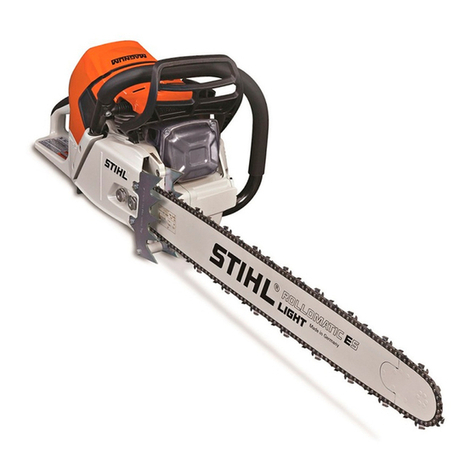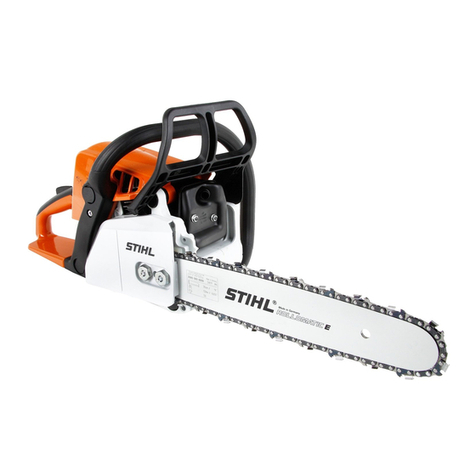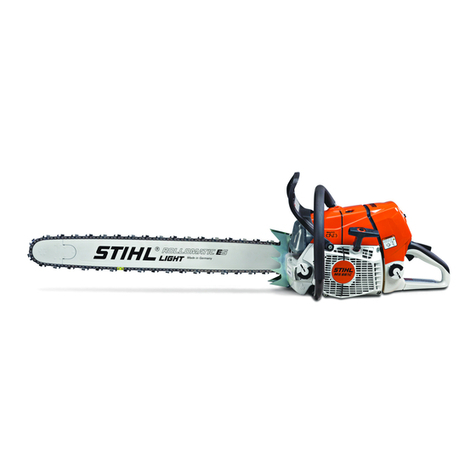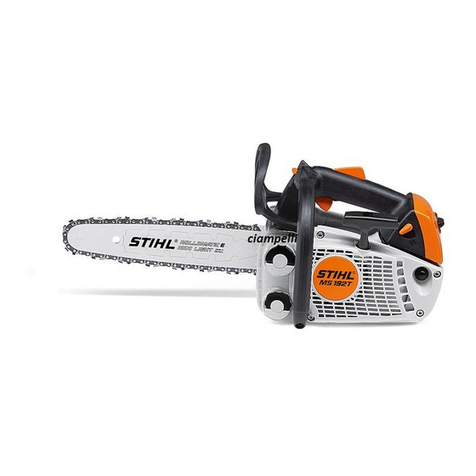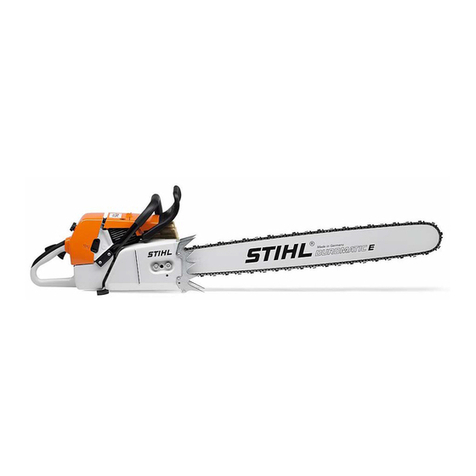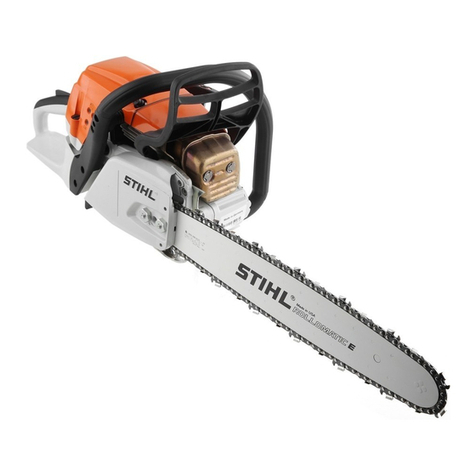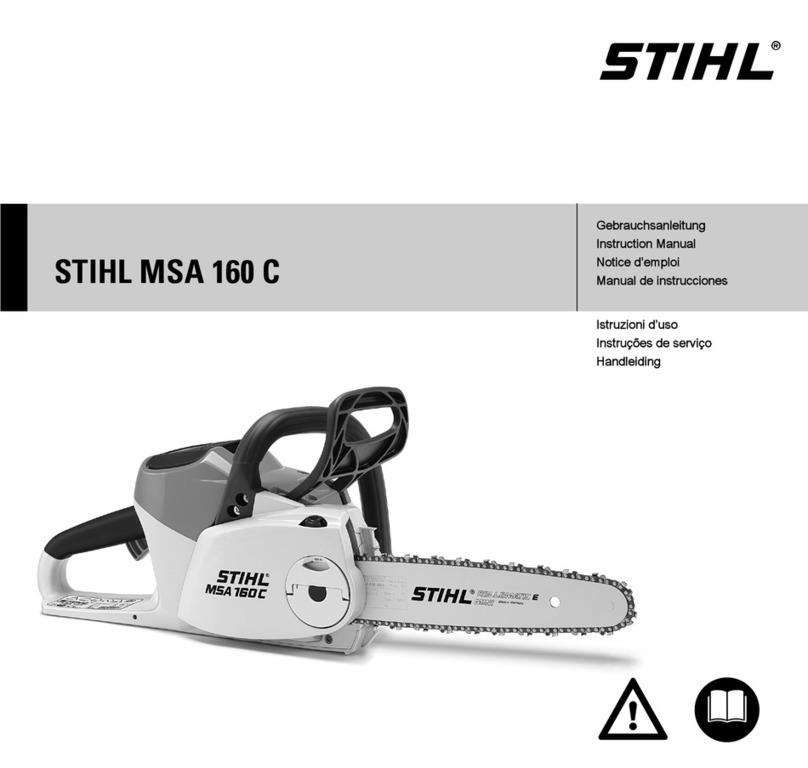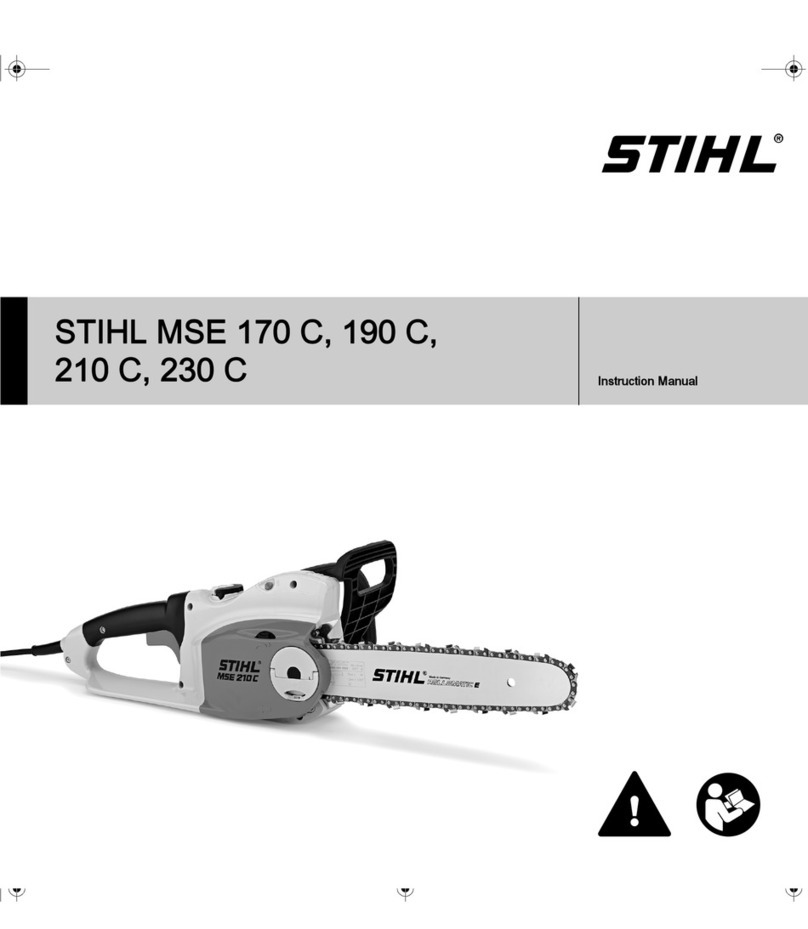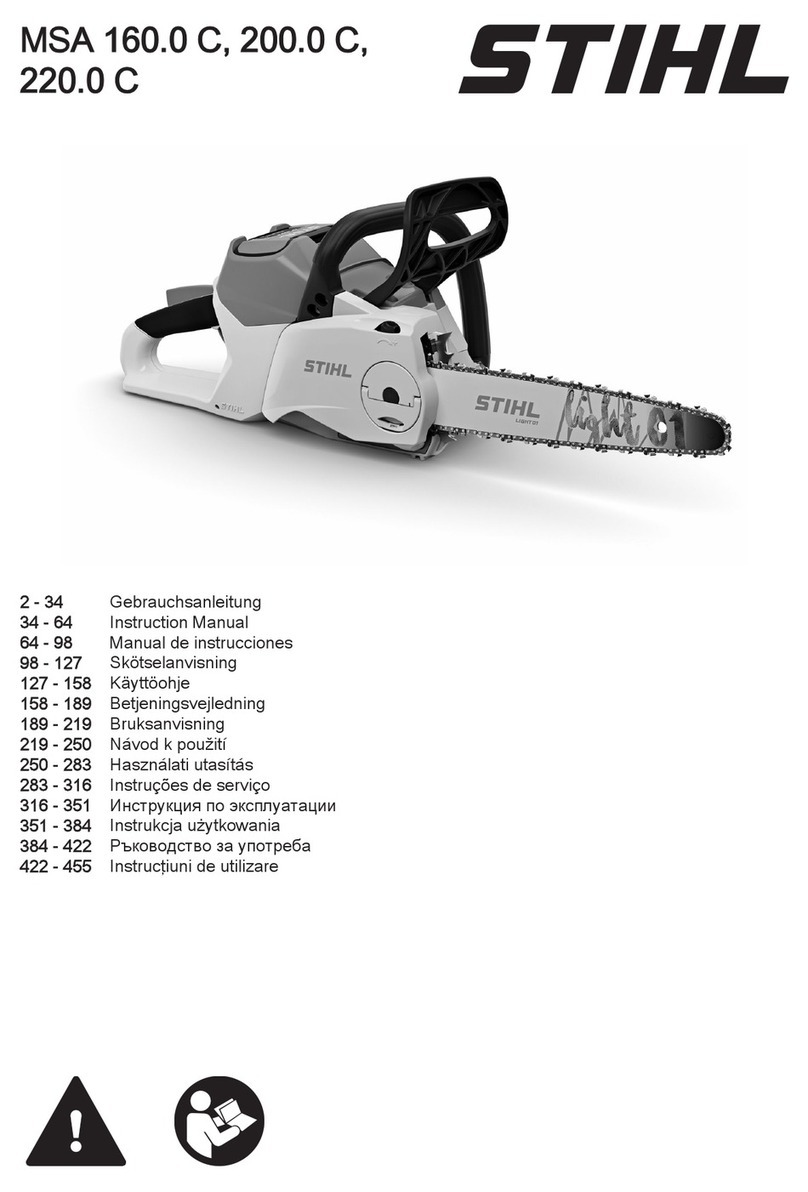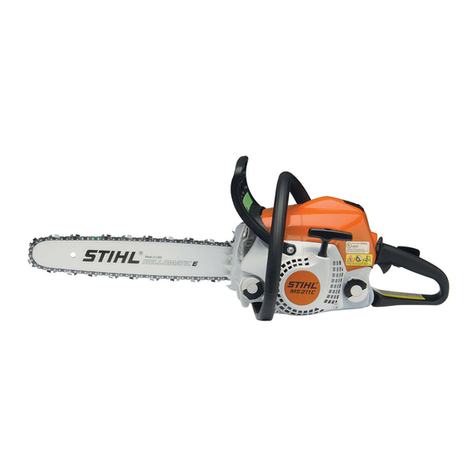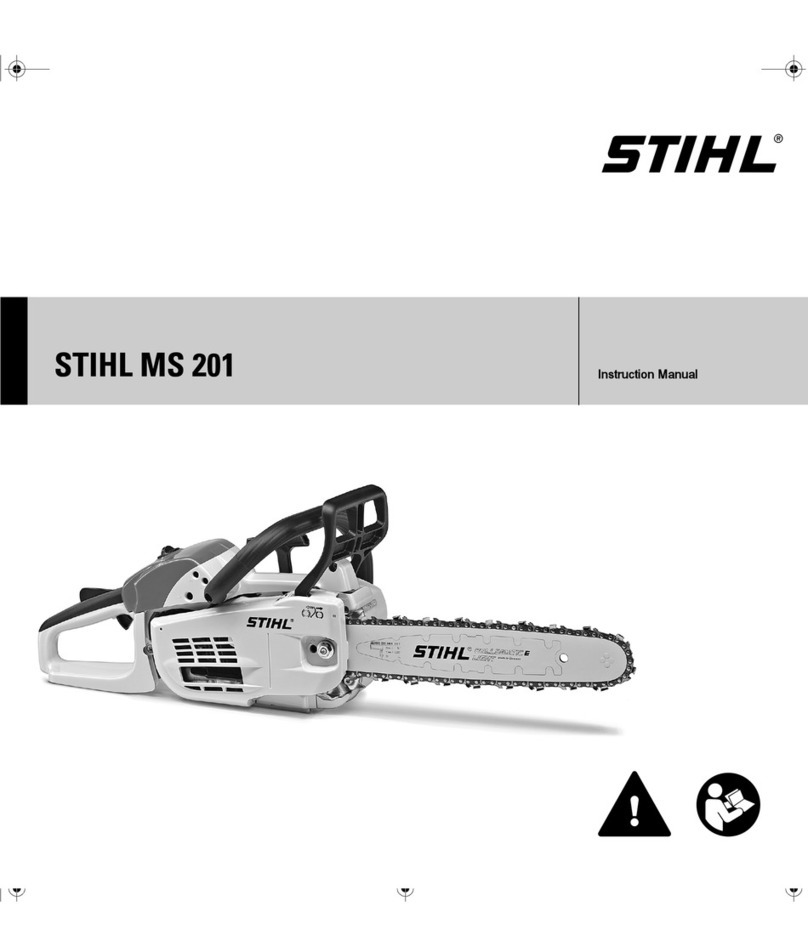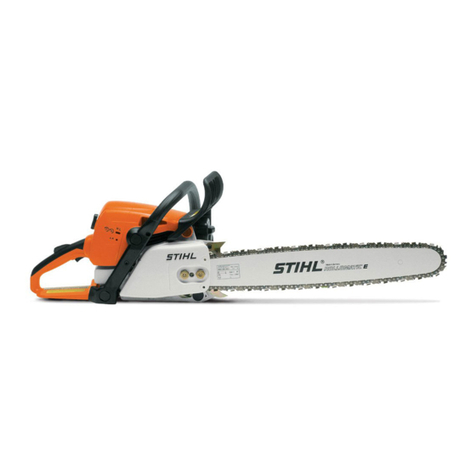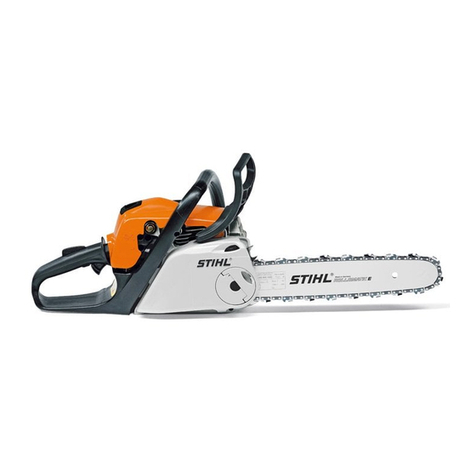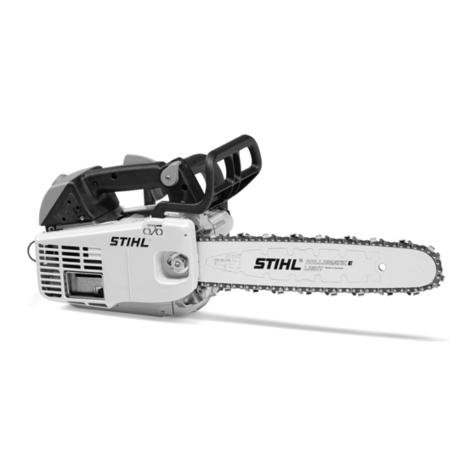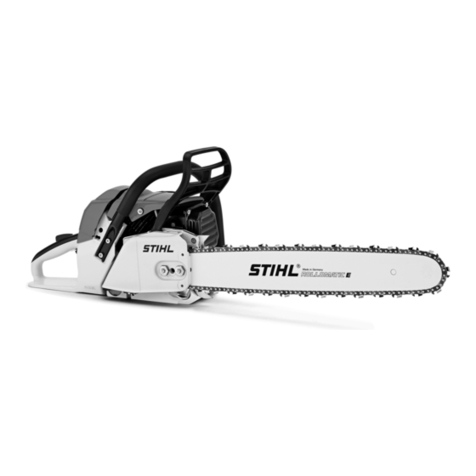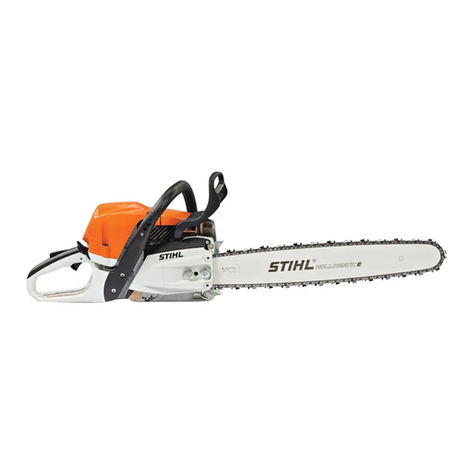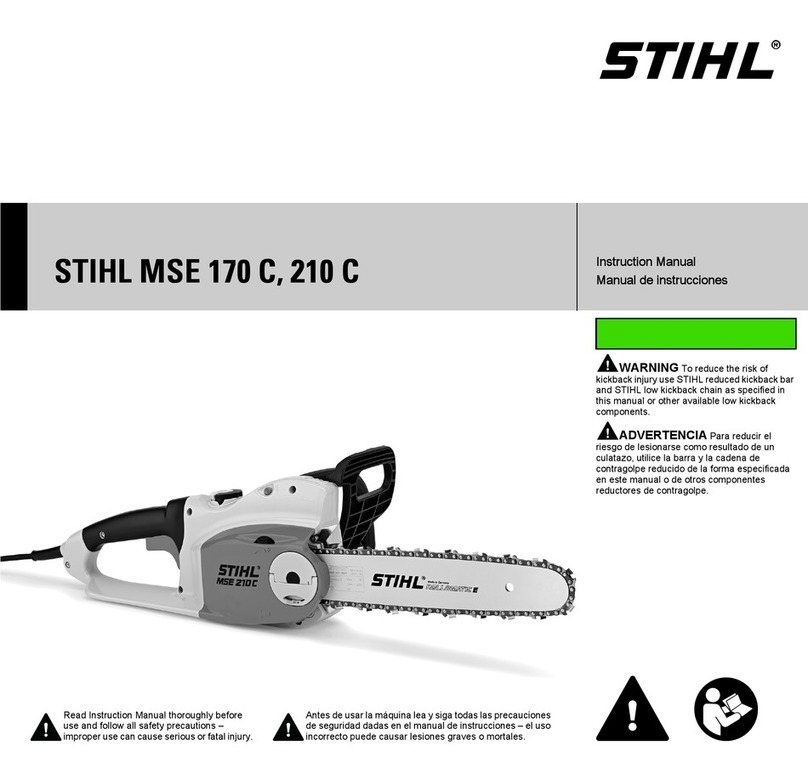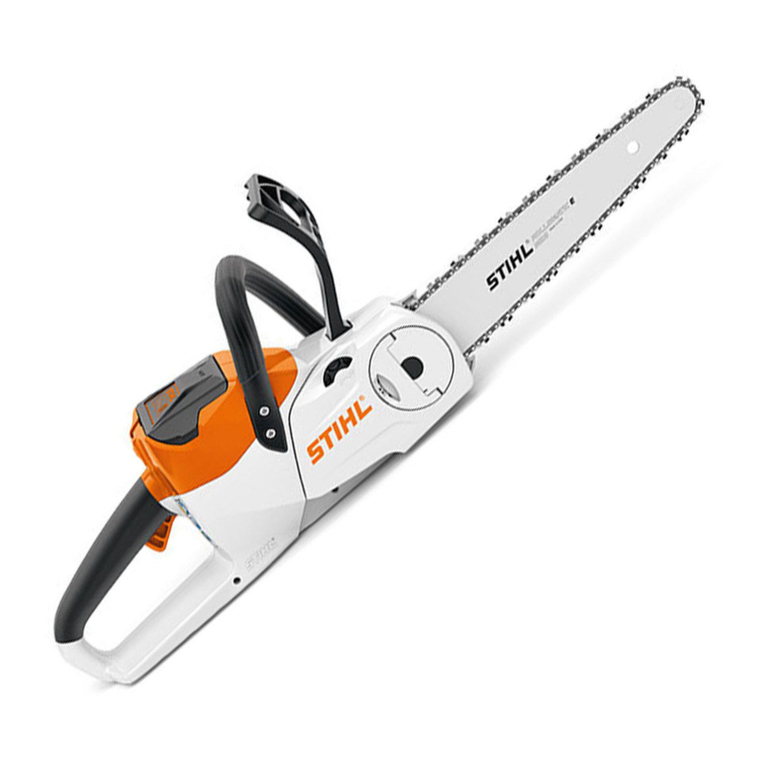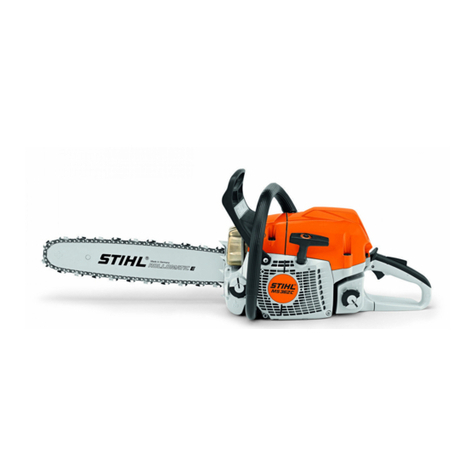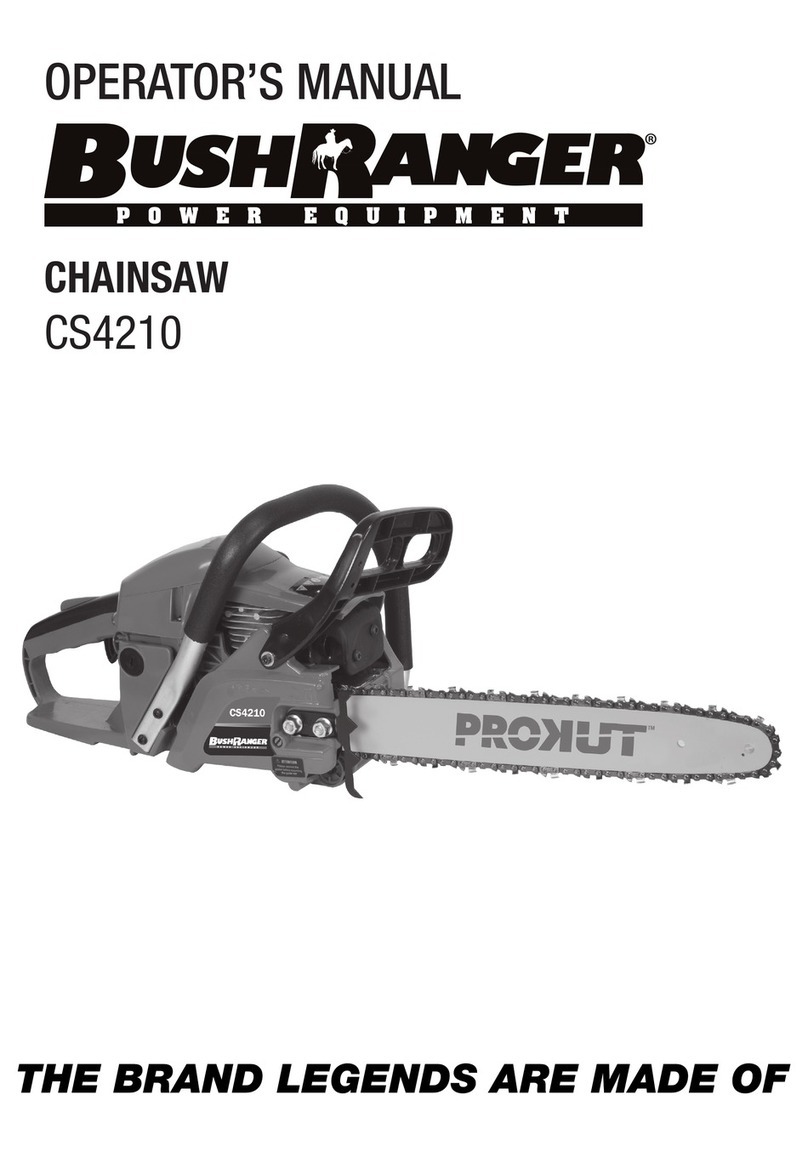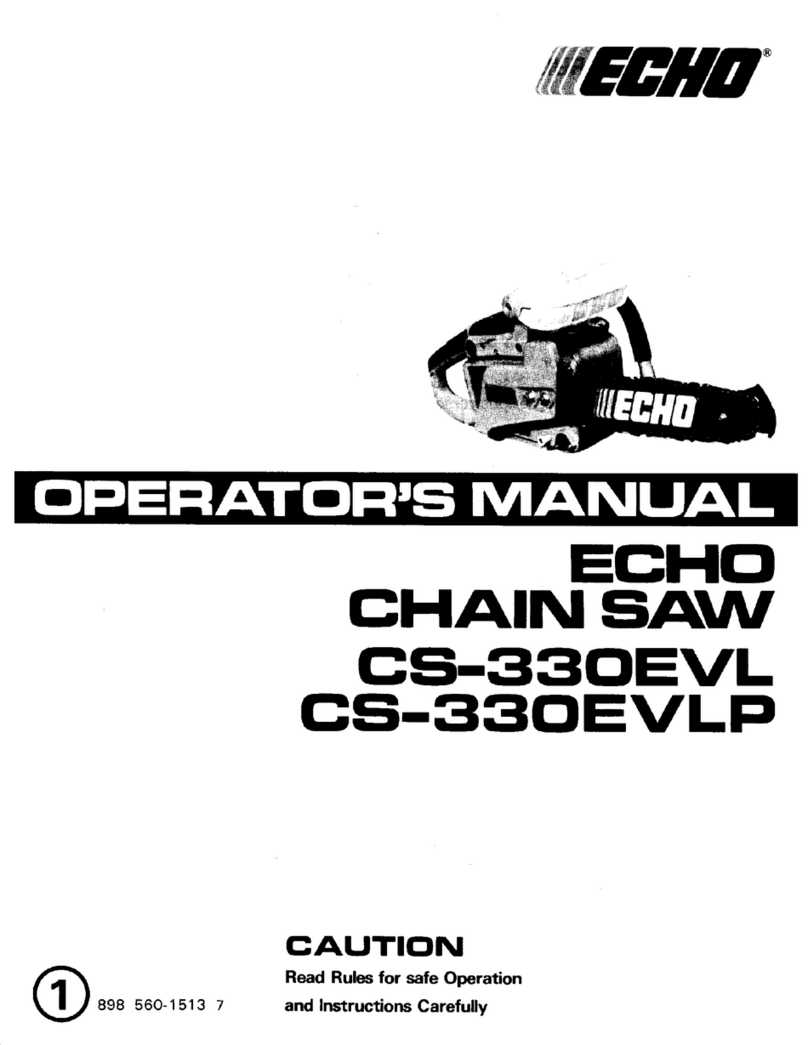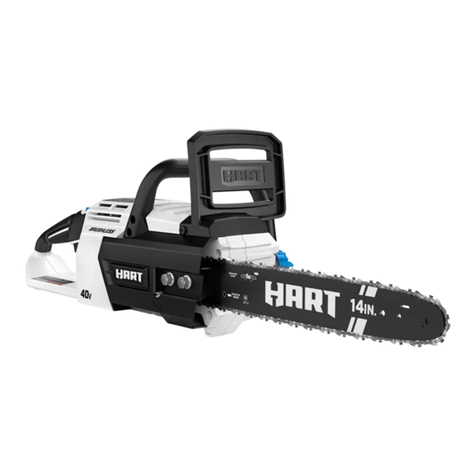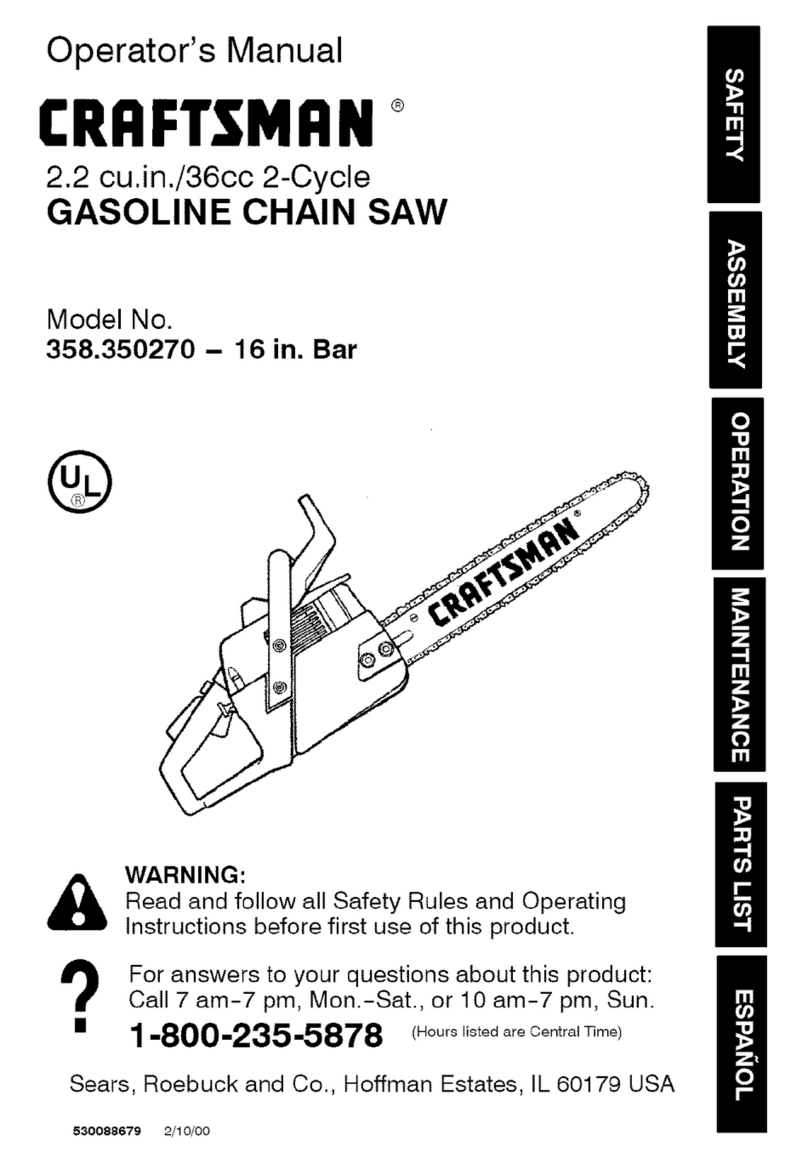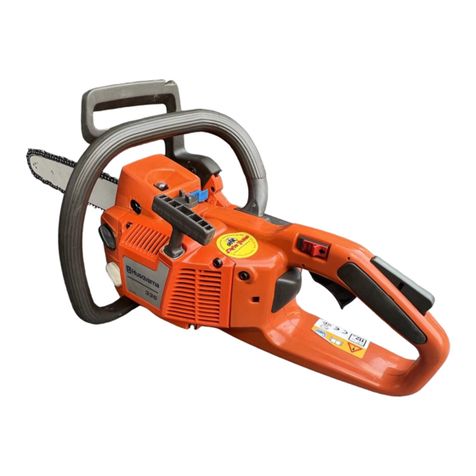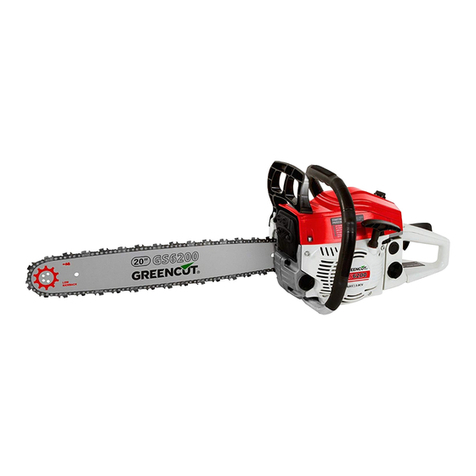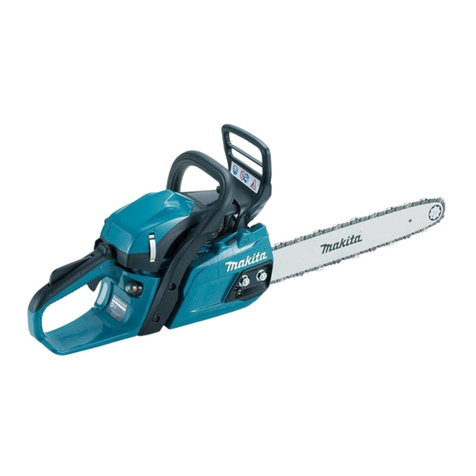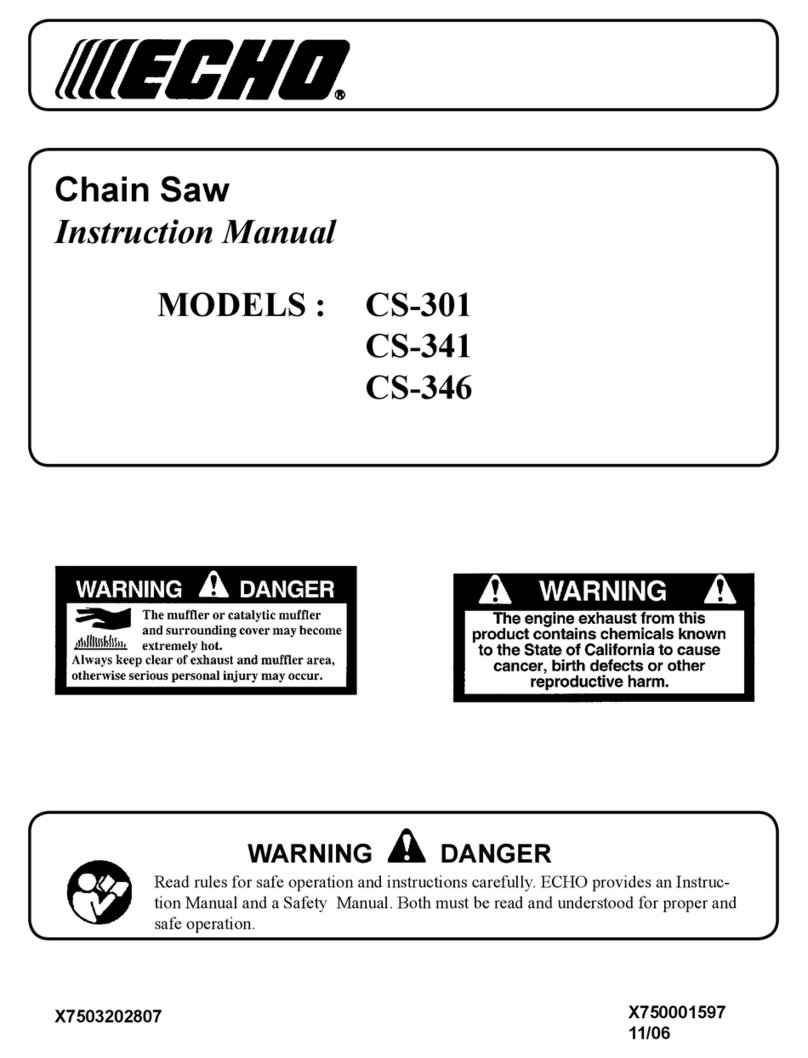MSA 160 C
English
6
Holding and guiding the machine
Always hold the machine firmly with
both hands: Right hand on the rear
handle – even if you are left-handed. To
ensure reliable control, wrap your
thumbs tightly around the handlebar and
handle.
During work
Ensure you always have a firm and safe
footing.
In case of imminent danger or in an
emergency, switch off the machine
immediately, set the hand guard to ƒ
and remove the battery from the
machine.
The machine is operated by only one
person. There should not be any other
person within the working area.
Do not leave the machine standing in the
rain.
Exercise caution with slippery surfaces,
water, snow, ice, steep slopes, uneven
ground or green wood that has just been
stripped of its bark – danger of
slipping!
Use caution with tree stumps, roots,
ditches – danger of stumbling!
Do not work alone – keep within calling
distance of others in case help is
needed.
More care and attention than usual are
required when wearing ear protection –
warning sounds (shouts, alarms, etc.)
cannot be heard properly.
Take breaks in due time in order to
prevent tiredness and exhaustion – risk
of accidents!
Dust (e. g., sawdust), produced while
using the machine may be hazardous to
health. Wear a dust mask if dust is
generated.
No smoking when working with or near
the machine - risk of fire!
Examine the saw chain periodically at
short intervals and as soon as you note
any tangible changes:
–Turn off the machine, wait until the
saw chain has stopped moving,
remove battery
–Check condition and secure fitting
–Ensure that the cutting blades are
sharp
Never touch the saw chain when the
machine is running. If the saw chain
becomes jammed by an object, turn off
the machine immediately before
attempting to remove the object – risk of
injury!
Before leaving the machine: Turn off
machine, set hand guard to ƒand
remove the battery from the machine.
To change the saw chain, turn off
machine, set hand guard to ƒand
remove the battery from the machine.
Risk of injury if the motor starts
inadvertently!
The machine is equipped with a system
for stopping the saw chain quickly – the
chain is stopped immediately if the
trigger switch is released – see
"Coasting brake".
Check this function periodically at short
intervals. Do not operate machine if the
saw chain continues moving when the
trigger switch is released – see
"Coasting brake" – risk of injury! Visit
your servicing dealer.
If the machine is subjected to unusually
high loads for which it was not designed
(e.g., heavy impact or a fall), always
check that it is in good condition before
continuing work - refer also to "Before
starting work". In particular, make
certain that the safety mechanisms are
working properly. Never use the
machine if it is not in good condition.
Consult a servicing dealer if in doubt.
After finishing work
Clean the machine to remove dust and
dirt – do not use degreasing agents.
Reactive forces
The most common reactive forces are:
kickback, pushback and pull-in.
Do not use the machine
in the rain or in wet or
extremely damp environ-
ments – the drive motor is
not waterproof.
